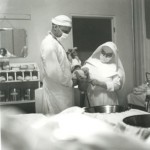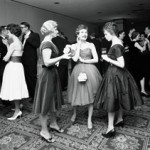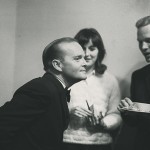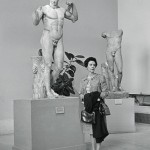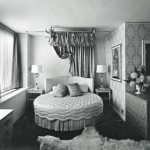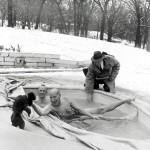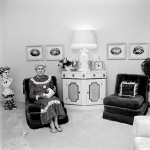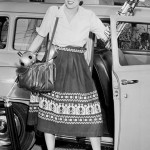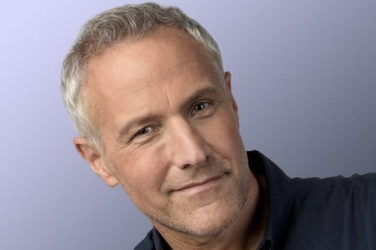
Photo by Jean Strong.
[dropcap]F[/dropcap]ar be it for Iowa City photographer Joan Liffring-Zug Bourret to boast about her extraordinary past. This vital 83-year-old would rather enthuse over her newest projects. But if she cared to congratulate herself, she’d have more to brag about than just about anyone else. During her six-decade career, she’s taken more than a million photographs, a number of which are invaluable historic documents as well as museum-collected art. And, throughout her life, she’s stayed faithful to her idealistic mission: “a search for visual truth and social justice,” as she puts it.
Bourret’s awareness of social justice, or the lack if it, came early. As a 7-year-old living with her grandparents in northern Minnesota, she recalls, “I was discriminated against by Swedish kids because I was part Norwegian.” While growing up, Bourret continues, she saw that many, many other people—despite the values enshrined in the Constitution and the Bill of Rights—weren’t treated equally, either. Camera at hand (she describes herself as “visual” from the age of 5), the determined, empathetic young woman set out to change the world.
“Joan is a force of nature,” says Mary Sharp, who retired in 2010 after 16 years as city editor at The Gazette in Cedar Rapids. Sharp calls Bourret “fearless” in breaking barriers—she cleared the way for women who wanted careers and children, too.
While a fledgling staff photographer at The Gazette, Bourret was fired when she became pregnant with her first child. Furious at this—at being thwarted in her efforts to capture meaningful, socially responsible images just because she was having a baby—she undertook a project no one had ever tried before. At age 22, she photographed her own child being born.
The Birth series, as she named it, was rejected by every magazine in the United States. Her shots were captured “from the mother’s viewpoint,” says Bourret, “and I didn’t see anything that was unfit to share.” She finally sent them to The Des Moines Register, where they were published in the newspaper’s Picture magazine. Soon enough, the Register asked Bourret to freelance. Her initially shunned Birth series was picked up by Look magazine and by the U.S. State Department’s magazine for Finnish readers. (Decades later, speaking to an audience in New York City, Bourret dryly observed that in less-prudish Finland, “women have their babies in the sauna.”) As she and her camera skills matured, she became one of Iowa’s few professional female documentary photographers.
In 1961, Bourret heard about episodes of housing discrimination in Cedar Rapids and promptly joined the NAACP. She also approached the Register’s city editor, John Zug, with the plight of Percy Harris, a young black doctor futilely trying to buy a house outside Cedar Rapids’ ghetto.
The Register broke the story, with Bourret’s photos. This forced The Gazette to address its city’s integration issues. Years later, Bourret and Zug (her editor became her second husband in 1967) agreed that the housing article was their most significant collaboration.
For most of her time as Iowa’s activist photographer of record, Bourret’s shots were credited to “Joan Liffring,” then to “Joan Liffring-Zug.” What’s never changed is her physical proximity to her equipment: Without fail, she keeps “a couple Leicas” close by. “If you have a really good camera hanging around your neck,” she explains, “you don’t need a pro badge or anything. It just paves the way to go through a crowd.”
Bourret has been divorced and widowed and is now married to retired businessman Dwayne Bourret. In 1979, she co-founded (and still directs) Penfield Books, which publishes ethnic cookbooks from its base in Iowa City. “And I don’t even cook,” she confesses. Despite her own indifference to ovens and spatulas, her company’s books coax readers to explore and savor many countries’ cuisines.
Penfield Press has debuted numerous other titles as well—Swedish novels translated into English, for instance, and a survey of Iowa’s round barns. Bourret’s book recounting her own life, “Pictures and People: A Search for Visual Truth and Social Justice,” added a recent bright feather to Penfield’s literary cap. Among 1,300 entries, her slim but photography-rich volume won first place in the autobiography/memoirs category at the national Independent Book Publishers Association awards reception in June 2012.
It comes as no surprise to anyone who’s encountered Bourret that Penfield Books runs on state-of-the-art technology. In the summer of 1995, she says, she went to take a publishing course at Stanford: “The Internet was just coming out, and when I got back to Iowa City, I immediately did everything they suggested.” Now, she says, it’s exciting “to bring our books out as e-books.”
Bourret was inducted into the Iowa Women’s Hall of Fame in 1996. Over time, the Metropolitan Museum of Art in New York has acquired two of her photographs for its permanent collection. One immortalizes a fizzy mid-century Junior League Christmas party; the other is an unsparing portrait of Grant Wood’s bewigged, tight-lipped sister, Nan Wood Graham.
As a creative consultant to museums and libraries, Decorah resident D.W. Wright has long been familiar with Bourret and her photography. He praises her work’s focus on the telling detail and says it unfailingly displays “critical judgement, imagination, wit and wisdom.”
Comfortable though Bourret’s laurels may be, she refuses to rest on them. Recently she worked with her son, David Heusinkveld, to edit his photographs for a newly released book called “The Amana Landscape.” “David’s nature pictures are far more abstract and interesting than any I have ever taken,” she says, joining the fondness of a mother with the acumen of a critic and the promotional savvy of a bookseller. “They’re really quite phenomenal.” (See some of Heusinkveld’s photos, pages 216-219.) Bourret is deep into a personal project, too: She’s photographing people for a book titled “How To Be Happy,” and interviewing her subjects about the choices and outlooks that have brought them their happiness.
Ever delighted to feast her eyes, Bourret has traveled to Europe seven times and taken numerous cruises. “I wound up being crazy about the Caribbean,” she says. With her husband, she often spends weekends at their retreat in McGregor, near a wildlife preserve and the Mississippi River.
Former Gazette editor Sharp admires the couple’s enthusiasm for new people and adventures: “They work, they play, they entertain.” Wright professes a similar awe of Bourret’s undiminished strength and relevance. And because he knows Bourret, he always feels plugged in. Whether it’s fascinating people, places, experiences or ideas, he says, “she rounds them all up and shares them with you.”


